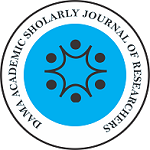Authors: Dessy Apriliya Mandasari1, Bambang Wirjatmadi2, Merryana Andriani3
1Master Student at Faculty of Public Health, Airlangga University, Indonesia
2&3Lecturer at Faculty of Public Health, Airlangga University, Indonesia
Abstract
Diarrhea caused by a wide variety of factors such as infections (bacteria, virus, parasite, etc), food poisoned, allergic, and contaminated water sources or drinking water. Diarrhea is distinguished into acute diarrhea that occurs <14 days and chronic diarrhea lasting more than 14 days. The research was conducted along the coastal area of Situbondo and in rural area of Bondowoso to analyze the difference of factors which affects diarrhea in those area. This research applied observational analytics with case-control retrospective design. 150 samples (mother of toddler) obtained using random sampling in 6 community health center along the coastal area of Situbondo and 6 community health center in rural area of Bondowoso. The dependent variable in this research was the number of severe diarrhea cases (secondary data from community health center) and the independent variable was the availability of latrine and toddlers’ nutritional status. This research shows that there was a difference in latrine availability in a case group and control group in both areas with P = 0.000 (P < α) in the coastal area of Situbondo and P = 0.000 (P < α) in the rural area of Bondowoso. The availability of latrine in the coastal area of Situbondo contributed to the occurrence of diarrhea cases (P = 0.020), but had no impact in rural area of Bondowoso (P = 0.068). This research also shows us that there was a difference of nutritional status in case group and control group to the occurrence of diarrhea in both areas which account for (P = 0.002) and (P = 0.006) respectively. And then, there was an impact of nutritional status to the incidence of diarrhea (P = 0.006 and P = 0.039).
Keywords: Diarrhea, Latrine Availability, Toddlers’ Nutritional Status

